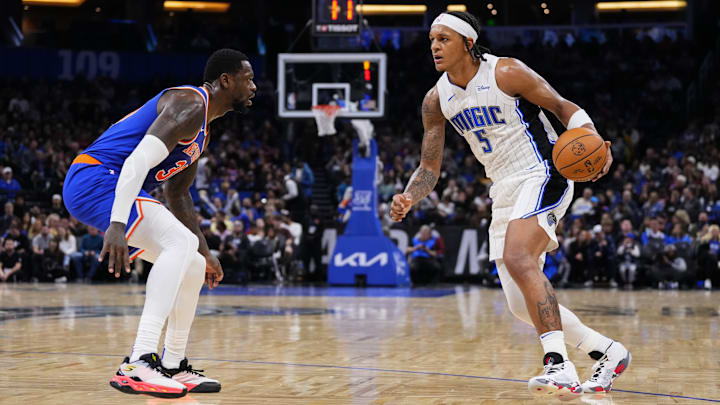3. Carmelo Anthony
So who are the players Paolo Banchero actually should take lessons from? If Julius Randle is the low end of possible Paolo Banchero development outcomes, what are the high ends?
Because the statistics all suggest Banchero should be compared only to the elite of the elite based on his first two years.
The biggest player comp Banchero received throughout the draft process was to another All-NBA iso scorer.
Paolo Banchero has probably been compared to Carmelo Anthony more than any other player. Sometimes that is done pejoratively to suggest Banchero is an iso scorer who does not necessarily impact winning despite putting up huge numbers.
Never mind, all of Anthony's peers revere him and his Hall of Fame career. Anthony is still a lofty goal for Banchero to reach.
Anthony is one of the elite scorers in the league's history, averaging 22.5 points per game for his career and topping off at a league-high 28.7 points per game in his age-27 season in 2012.
But his first two years were mired with the same inefficiency Banchero is facing. Anthony averaged 21.0 points per game on 42.6/32.2/77.7 shooting splits in his rookie year as a 19-year-old. Then followed that up with 20.8 points per game on 43.1/26.6/79.6 shooting splits in his second season.
Anthony posted true shooting percentages of 50.9 and 52.6 percent on usage rates of 28.5 and 29.2 percent in his first two seasons.
Banchero had better counting stats in his first two years than in Anthony's first two years and he was more efficient—Banchero has true shooting percentages of 52.9 and 54.6 percent on 27.5 and 29.7 percent usage rates in his first two seasons.
Anthony needed three years to hit that level of efficiency with his shooting before he stayed there permanently.
Whether Anthony, who never won a title and reached the conference finals only once in the 2009 season, is a positive comparison for Banchero is something perhaps to debate. Anthony is still one of the best scorers of his generation and of his time. He is a Hall of Fame player.
And that Banchero is better than Anthony in his first two years in all of those critical areas shows that Banchero is still on a clear path to a legendary career.
If Banchero can make the efficiency leap—Anthony's best true shooting percentage while he was the main star came when he posted a 56.8 percent true shooting percentage and averaged 25.7 points per game in the 2008 season—that Anthony made beginning in his third season, then Banchero is on his way to a Hall-of-Fame career.
But that is the thing. The criticism may be too unfair and conclusory from the national media as they discuss Banchero. But they are right. Banchero has to elevate his efficiency to become one of the league's best players and lead his team to a title.
